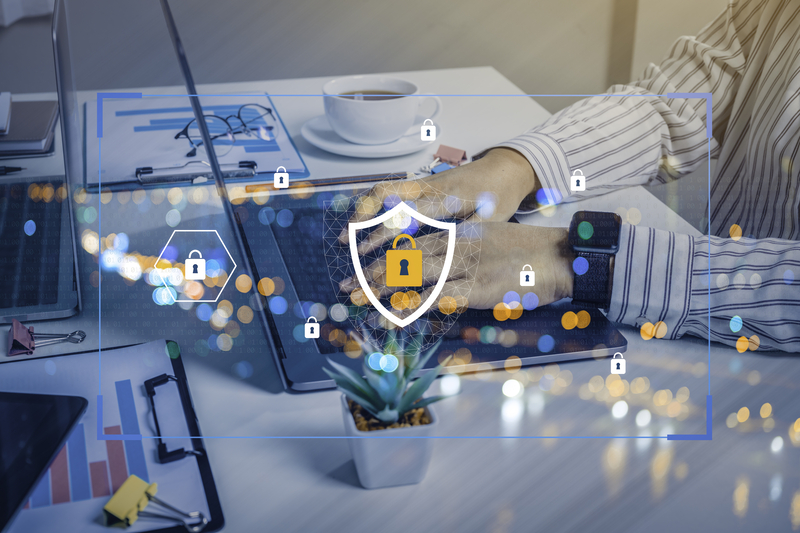Since the early days of the internet, hackers and cybercriminals (otherwise known as bad actors or threat actors) have taken advantage of innocent people and talked them out of their hard-earned money and personal data. What started as generic Nigerian prince email scams and listings of counterfeit goods on Amazon has evolved into sophisticated messages and phone calls targeted explicitly to an individual.
This type of targeted attack is known as spear phishing. The more you know about this type of cyber attack, the better protected you and your company are. Keep reading to learn more about this practice.
What Is Spear Phishing?

Spear phishing is a term used to describe a targeted attack to steal your data, including account credentials and financial information. Hackers use personal information about their target, such as where they work, their hometown, locations they visit regularly, and even purchases they recently made online, to personalize their attack.
Cybercriminals can use this information and disguise their suspicious email, text message, or phone call to appear as if it is coming from a trustworthy source. A malicious link or attachment is then included in the message. When a spear-phishing email link is opened, it can download malware or ransomware to your computer without your knowledge or open a dangerous website, allowing the cybercriminal to access your sensitive information. If not addressed by an IT professional, the attacker can initiate actions that can compromise the integrity of your computer, personal data, and the network.
Spear phishing attacks target both individuals and entire organizations. According to cybersecurity experts, spear-phishing attacks account for 91% of all online scams hackers use to acquire confidential information.
How Does Spear Phishing Work?

Over the past few years, spear-phishing emails have gotten significantly more advanced. It is getting harder to detect foul play without knowing how to spot a spear-phishing attack.
Spear phishing attackers usually target victims who share their personal data on the internet. Profiles on social media sites, comments on new articles, and even a mention in a press release by your work can be enough information for a hacker to get started. They will gather personal data, such as your email address, geographic location, social security number, organizations you bank with, and recent online purchases, and use it to convince you to interact with a suspicious email. Attackers often send message requests with a sense of urgency to increase their success rate.
An Example
An example of spear-fishing might be someone posing as your bank and sending a suspicious email or text message warning you that they have flagged your account. They will include a link in the email that prompts you to log into your bank account to approve or deny the questionable charges.
Unfortunately, this link takes you to a spoofed website designed to look like your bank. The attacker has your account number, username, password, and authentication codes. This information can be used to drain your account or carry out identity theft. The hacker may also download malware or ransomware to your computer to gather additional sensitive information.
Spear Phishing vs. Phishing

While phishing and spear-phishing are similar, it is essential to understand the critical differences between these two types of scams.
Phishing
Phishing is a more general term to describe any cybersecurity attempt to scam a victim into sharing their data with an untrustworthy source.
Common types of information scammers are after include passwords, credit card numbers, social security numbers, user names, and email addresses. Phishing attempts will usually involve messages that appear from a trustworthy source or include messages with a sense of urgency to convince users to click without thinking.
Unlike spear-phishing, traditional phishing attacks are not personalized. Cybercriminals will send out mass emails or texts, hoping that contacting a large enough group will lead to one or two who will mistakenly click on something from their phishing campaigns.
Spear-Phishing
The disguises used in spear-phishing attacks tailor their approach to fit the individual target. The hacker will send their text message or email from an account with which the user is already familiar. These emails will usually contain personal information about the target, adding a false sense of security.
The more legitimate a spear-phishing email looks, the higher the chance of a user mistaking it for legitimate correspondence. When a user trusts the sender, they are more likely to click on a link or download a document, which will give the hacker unrestricted access to their data.
Signs of a Phishing Scam

IT professionals recommend always being on the lookout for suspicious emails. You can increase your email security by keeping an eye out for these telltale signs of a phishing campaign:
- Generic greetings
- Urgent action requests you did not initiate
- Unsolicited requests for personal data
Additional security awareness training and security tips for spotting a scam are available on the Federal Trade Commissions (FTC) website.
How to Protect Yourself from a Spear Phishing Attack

Watch What You Post on Social Networks
Spear phishers will use any information they can find about you to tailor their attack. Experts recommend limiting the amount of information you post online, especially if it is not something you would want a cybercriminal to see. At the very least, you should configure the privacy settings on your social media accounts to allow only people you approve of to view your information.
Create Smart Passwords
Do not use one password or a simple variation of a single password for every account you own. If a hacker gets access to one of your passwords, they can gain access to every account that uses that same authentication. Experts recommend using a unique password for every account with a combination of numbers and letters.
Update Your Software
Constantly update your software when you receive a notification of an available update. Most systems include security software, which can protect you from a cyber attack. Opting for automatic software updates will ensure your computer is always up to date and helps protect against spear phishing.
Don’t Click on Links in Emails
You should treat every embedded email link with caution. If your bank or other organization sends you an email containing a link, you should open a new browser to visit your bank’s website directly, rather than clicking on the link.
You can see the destination of any link by hovering your mouse over it. If the link address does not match the anchor text, there is a good chance the link is malicious.
Open Emails with Care
Your friends will rarely email you asking for your login information, and your bank will never send you a text message asking for your username and password. Simply questioning a request will usually be enough to tell you if something is suspicious. If you are unsure, give them a call or contact them through another channel.
Implement a Data Protection Program
A data protection program, which includes Security awareness training, can prevent data loss and a data breach. For larger companies, a program to protect against spear phishing should also feature data loss prevention software and an antivirus program to help further protect your sensitive data from unauthorized users.
Security Services You Can Count On
The experts at STEADfast IT understand the importance of phishing protection to keep your personal data out of the hands of cybercriminals. With our proactive approach to cybersecurity, cloud services, telephony solutions, technology management, and bandwidth and connectivity, we understand the importance of protecting your data.
Our experts can implement security awareness training to prevent spear phishing attacks and ensure your network is secure with updated antivirus software.
If you’d like assistance choosing IT support services for your business, our team can help you find what fits your unique needs. Contact us to set up a free, no-pressure consultation with one of our remote IT specialists.
Similar Posts
What Does IT Support Service Mean?
Latency vs Bandwidth Breakdown
Why Should Your Business Move to the Cloud?
In-House vs Managed It Support
What are the Benefits of Cloud Protection?
Financial Benefits of a Managed IT Service
What is Cloud Service for Business?
Why is Data Security Important for Business?

